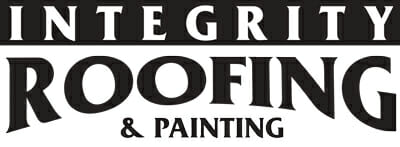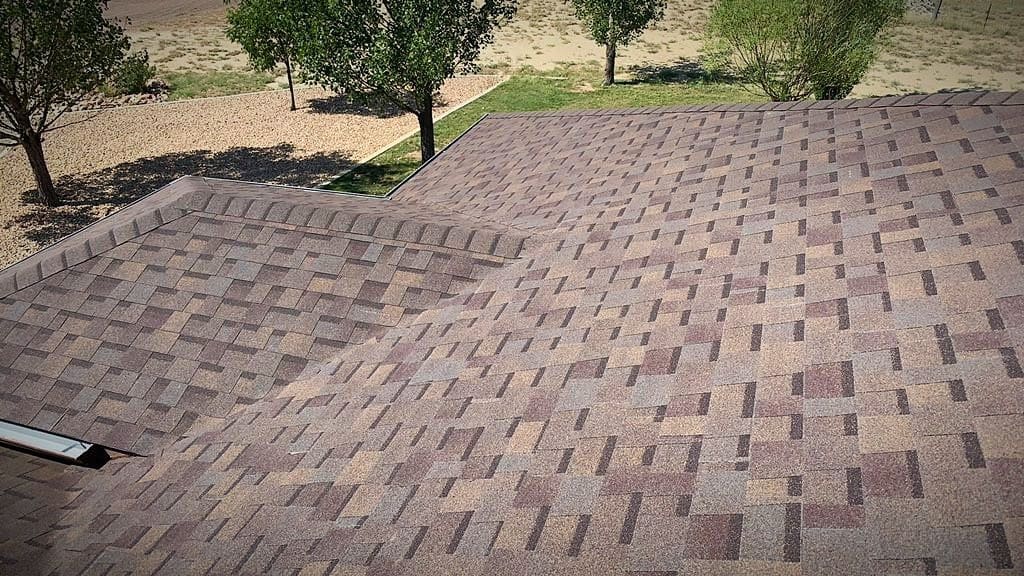Roof safety should always remain your primary concern. As your local Colorado Springs roofer, Integrity Roofing and Painting has procedures in place to abide by not only OSHA standards but additional safety procedures that we have enforced and highly suggest! There are many guidelines to follow when working on a roof, or even climbing up on to a roof, and we are here to discuss those safety procedures and guidelines in this blog. Don’t wait for an accident to happen!
How Do You Work on a Roof Safely?
Whether you’re a homeowner, or a contractor, safety when roofing should always be enforced before even climbing onto the roof! Before any work takes place, make sure that you have an organized work site. Before any construction takes place, make it a point to block the area off from bystanders, children and/or pets. Take notice of your surroundings and any potential danger. This includes taking a look at other construction sites nearby, power lines, roadwork or traffic. If you are unable to avoid power lines, reach out to the local utility company for assistance. Do not work on a roof during bad weather. On every job site, be sure that anyone working under an active construction site is equipped with an OSHA compliant hard hat.
How to Stay Safe on a Ladder
Now that we’ve covered general safety, lets discuss ladder safety. Ladders come in many types, and sizes. It is very important to recognize and understand how the ladder being set up or being used properly operates and the specifications of that specific ladder. Never set your ladder up on an uneven surface and always be sure that it is secure. The ladder base should extend one foot for every four foot of elevation. It is so very important to inspect any ladder before climbing onto it. Be sure to never use a ladder that is defective! Always lock the ladder and remove the key and be sure to label it as damaged to assure that no one else uses it. Read the label that is usually located on the side of the ladder so that you’re aware of weight limits and other important details. Never use a step ladder as a straight ladder and never step on the top rung of any ladder. Be sure you are always maintaining three points of contact while climbing. This means one hand with two feet, or two hands with one foot. Always tie your ladder off and never reach longer than arms reach when on a ladder. Avoid climbing onto a ladder or roof that is slippery or wet.
Roof Nailing Safety
Let’s talk nailing safety! A nail gun is the most common tool used by roofers. Always be sure the nail gun is functioning properly. No matter what you do, never point a nail gun at another person and only pull the trigger when it is face down to the roof you are working on. Be sure anyone nailing or working near nailing is wearing safety glasses! Safety glasses should be rated ANSI Z87.1-.1989 and ANSI Z87.1-2003 according to OSHA guidelines. Always be sure that when finished using a nail gun that the air supply is disconnected to avoid any incidents or accidents.
Every jobsite should have at least one competent person. What is a competent person you might ask? OSHA defines a competent person as “one who is capable of identifying existing and predictable hazards in the surroundings or working conditions which are unsanitary, hazardous, or dangerous to employees, and who has authorization to take prompt corrective measures to eliminate them.” This would be the person in charge of the site. The person who is designated to make sure all health, safety and install requirements and needs are being met or followed. The competent person should be completing thorough inspections multiple times throughout the job process. They should also be completing the equipment inspections as well as the job inspections.
Fall Protection and Roof Safety Harnesses
Falls are unfortunately a very high percentage of roofer deaths and incidents by Colorado roofers and roofers across the nation. Personal fall protection is to be used by any and every person working on a roof top above six feet high. There are other options rather than a harness, such as a guard rail but different options have different requirements.
The most common fall protection used here by Colorado Springs roofers would be a harness with a lanyard and an anchor secured to the rafter.
Roof anchors should be installed with one of two different types of nails. Be sure when installing an anchor to use 6d penny nails or duplex nails. Stay away from putting nails in a line on the anchors as you could split the rafter and always be sure to put enough nails to secure the anchor properly. Certain harnesses are much different than others so be sure to put on properly used specified instructions for that harness. When applying a harness always be sure that the straps are tight and secure. Straps that are not secure enough can cause serious physical issues and an immense amount of pain. Be sure all harnesses being used are not frayed or destroyed in any way. Inspect the lanyard, be sure the stitching is intact properly and that it is not frayed. Always be sure that the shock pack is intact. If the shock pack is not intact from the manufacturer, that tells us that it has been used or damaged, and is no longer safe. Replace your harness, lanyard, or anchors or any other safety equipment if they have been defected in any way. For additional safety information please refer to OSHA on the web.
Integrity Roofing and Painting is your local Colorado Springs roofer serving El Paso County and surrounding areas for over a decade! Our project managers and customer care team are on standby to serve you and your family and to ensure that all of your roofing wants, or needs are taken care of in a time efficient manner. Integrity is not just our name, but part of our values as a whole and as individuals. Play it safe and call us today for your free roof inspection at 719-488-2800!

